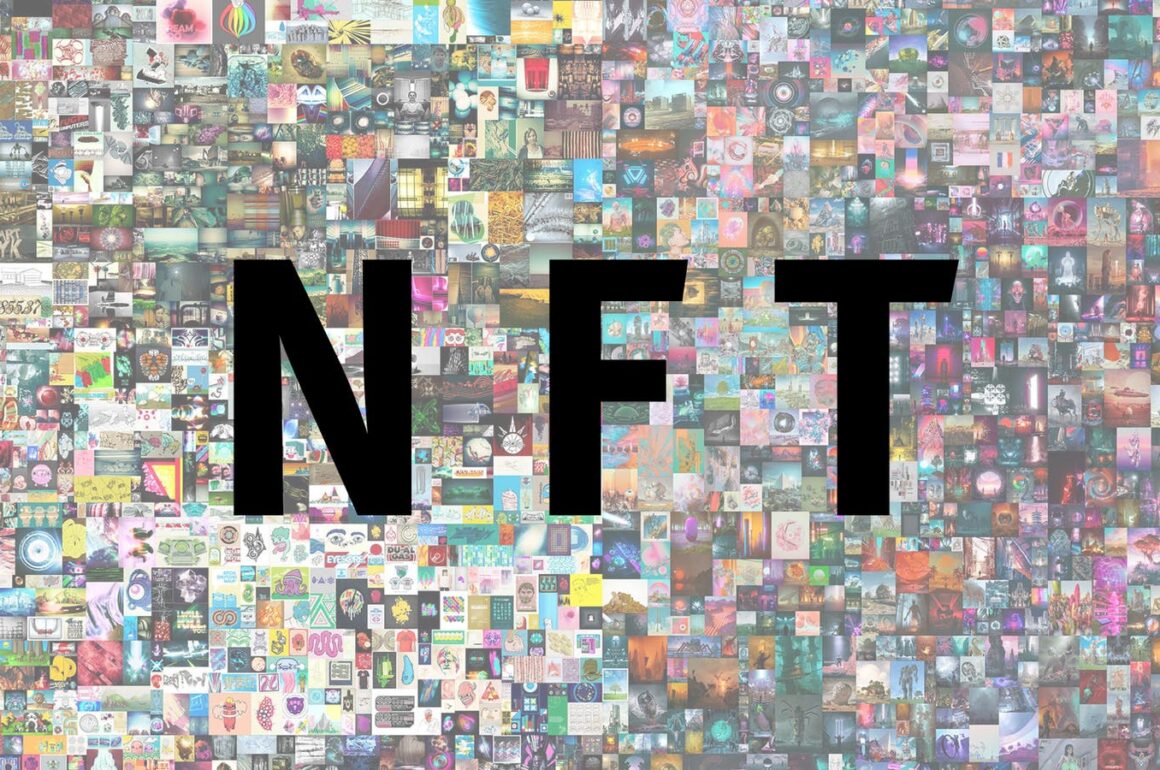
BUT WHAT EXACTLY IS IT, AND WHY IS IT TAKING OVER THE CREATIVE WORLD?
Article written by Studio BLUP features writer Danielle Temeng
If you haven’t yet heard the terms ‘cryptocurrency’, ‘Bitcoin’, or the latest craze ‘NFT’ recently, then it’s likely you’ve been living under a rock as search volumes for this coveted new term has skyrocketed just this year alone. With the number of weekly users across NFT platforms reaching an all-time high and surpassing 654,000 this month – sports collectible site NBA Top Shot making up the majority of this, the official Google search volume hit ‘100’ for the week beginning March 8th, with that figure growing from a rating of 15 in mid-February (search volumes are between 0-100, with 100 being the maximum in each time period). As we delve into exactly what an NFT is, how to obtain one and how it’s being used in the celebrity, creative and sports worlds we will also look at the challenges, the cryptocurrency, and the decentralised finance world it faces.
An NFT (non-fungible token) is a digital asset that can represent any real-world object such as art and music, to trading cards or virtual horses, but can also present itself as an exclusive digitised art collectable (such as one of the most popular NFT projects – ‘Hashmasks’). The nature of these assets is that they are singular – their likeness can be replicated, photographed, or copied but they can never be duplicated due to their unique and verifiable structure. Built and residing on the Ethereum blockchain, these tokens, which also include the BLUP’s very own NFT, are limitless in value and derive such due to their authenticity, media attention and ‘hype’, with the most expensive NFT (‘Everydays: the First 5000 Days’ by Beeple) being sold for $69.3M in a Christie’s auction, this is followed by digitised collectable ‘CryptoPunk #3100’ at $7.58M.
Image Source – The Hashmasks Store
As cryptocurrencies and alternative financial products become household terms, it’s become easier than ever to obtain these coveted coins and tokens and is simpler for retail investors (you and I) to get involved in a side of finance that many have never been exposed to previously. As of today, retail investors occupy a little over 23% of the US trading market, according to The Financial Times, this is double the numbers seen in 2019 and can largely be attributed to more downtime in the pandemic to build an interest in personal finance, and the surge caused by the GameStop frenzy at the beginning of 2021. With a range of apps available at our fingertips, such as recently IPO’d Coinbase, which is the first of its kind to do so, investing in cryptocurrency has never been easier. But the buck doesn’t stop there – innovative financial tech sites such as OpenSea which dubs itself “the world’s first and largest NFT marketplace” allows the seamless display, discovery, buying and selling of NFTs and is the first port of call for obtaining NFTs, but doesn’t overshadow the growing area of sites which specialise in competitive sports such as the NBA, and even horse breeding and racing.
So, is this all just one big buzz then – a fun way to hold your invested money? And why is the creative world becoming so heavily invested in this relatively new and certainly “hyped” term? Let’s start by noting that the art world works primarily on three facets: originality, exclusivity, and hype; NFTs and their popularity work in the exact same way. With its one-of-a-kind nature, shiny newness, and co-signs from famed personalities such as Damien Hirst (who is to release his first NFT project ‘The Currency’) and Jack Dorsey, CEO of Twitter (who sold his very first tweet as an NFT at $2.9M) enhancing its validity, cryptocurrencies and its sub-sectors are incredibly in the spotlight right now. This makes it the perfect technological advancement to amalgamate itself into the creative and entertainment industries.

As exciting as this new advancement is, there are, of course, questions posed on the feasibility and security of NFTs and alternative currencies – as with any new financial product on the market. One question is the assurance of value over time, can this be guaranteed or is this just an over-inflation due to its current cult status? With cryptocurrency controlled by a decentralised finance system (meaning no central bank, no customer support, and no regulatory bodies) investors and governments remain sceptical as they figure out the long-term usability of these products, the overall safety of investments, and how to avoid projects and systems collapsing along with people’s hard-earned money. An example of this was witnessed last week with Bicton’s crash which wiped over $300 billion off the crypto market, all caused by one strategically worded Elon Musk tweet. In the same breath, one of Turkey’s largest cryptocurrency exchange, Thodex, seemingly disappearing overnight with its 27-year-old CEO fleeing the country and losses of almost over $2 billion of user funds projected.
With the alternative financial market still booming despite its uncertainties, in this digital age advancements are yet to keep coming and expansions inevitable for the foreseeable future. To further understand the cryptocurrency & NFT space, overall, education is key. Do your research (understanding blockchain is a great place to start), invest cautiously and always seek professional advice with any new (or existing) financial product.
*Please note the above information is provided for entertainment purposes only and is in no way offered as financial advice; investment is risky, you can lose some or all of what you put in. Please contact a trained finance professional before you chose to invest your money.
Article written by Danielle Temeng (@__daniafia)
Want to write for theblup.com? Contact talent@studioblup.com







